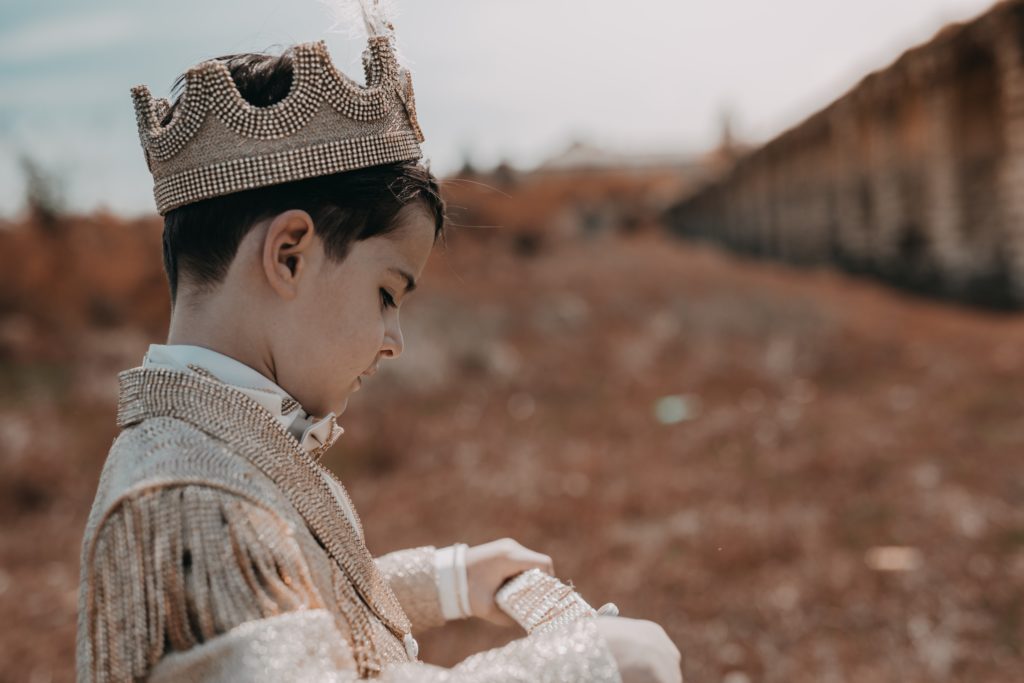As a parent, I try to create conditions for my kids to engage in healthy forms of play. Some activities involve going outside, playing in the park, walking in nature, or playing football, while others entail staying at home, such as painting, playing with clay and plasticine, building with Legos, or playing board games. These activities are particularly relevant in the times we live in, where the pandemic forces us to spend more time at home than we would like. However, there is a type of game that I feel fosters our relationships, helps kids develop their communication and interaction skills, aids in basic math, and, most importantly, nurtures their creativity in a social context. I’m referring to Tabletop Role-playing Games, commonly known as RPGs.
What are Role-playing Games?
All kids engage in role-playing when they play make-believe games, pretending to be superheroes or cowboys. Roleplay comes naturally to children. Role-playing games resemble these make-believe games, where players assume the role of a character and interact with others who are also playing roles.
So, what sets RPGs apart from make-believe games? RPGs have predefined rules that help maintain game balance. These rules are usually found in a core book. Most games also have a setting and predefined adventures. For example, in some RPGs, you can play as a fantasy warrior or wizard, while in others, you might play as a superhero or a pulp adventurer. RPG settings are as diverse as the imaginations of their creators. There isn’t just one RPG; there’s a vast array of RPGs of all kinds and flavors. The books containing adventures and settings are often referred to as sourcebooks.
Another feature that distinguishes RPGs from make-believe playing is that one of the players assumes the role of a guide or storyteller – a role typically taken on by a parent, but as kids become accustomed to playing and grow in experience and maturity, they can also take on this role. This role is usually called the Game Master. The Game Master narrates the story to the other players and applies the rules, while the other players describe their characters’ actions in that context. Through this interaction, the story unfolds and evolves collaboratively.
All you need to play is pen, paper, and imagination… oh, and some dice (RPGs typically use dice, some of which have many sides, while others use cards, but generally, RPGs use standard dice).
“You enter a room filled with gold and jewelry… at the back of the room, you see a shadow. It’s a black knight wielding a fiery sword. What do you do?” says the Game Master”
Why are Role-playing games good for kids?
When you develop a story for your children to play, you decide the challenges they will face, and they make choices to overcome those challenges. They create and perform their characters, communicate with other players, describe their actions, and devise solutions to the challenges they encounter. This helps children interact, develop communication and social skills, and nurture their creativity. You can also use stories to instill values you uphold, such as helping others, teamwork, friendship, and sharing. Furthermore, when children create their characters, they can learn about a particular historical period (if the story is set in one), draw inspiration from literary heroes, or simply from the rulebook. As they grow older, they’ll be able to create their own stories.
RPGs can be an excellent medium for helping children develop skills that mobile phones and TV don’t provide.
How do I start?
The first step is to choose an RPG suitable for your children’s age. There are plenty of RPGs suitable for kids (I’ll provide some examples for Coil subscribers below), so pick one and start reading the rules. Parents can play imaginative games with their kids through RPGs, simultaneously focusing on rules, cooperation, and story development. Kids love to create stories and engage in make-believe play; tabletop RPGs are excellent for developing communication, fostering creativity, and enhancing social skills.
And the best part? In RPGs, there are no winners or losers; there are only players who cooperate in problem-solving and collaboratively build a story.
Children are inherently creative; they are born with boundless dreams, and it’s the process of growing up that often imposes limits on them. With RPGs, you can help them cultivate a healthy hobby that preserves their childlike creativity as they grow older.
Thank you for reading. Stay safe and healthy.
Tabletop Role-playing games ideal to play with kids
Hero Kids is fantasy RPG for kids aged from 4 to 10, its a good introduction to RPGs, perfect for younger kids that love a fantasy theme.
Price: 5,99 at Drivethurpg.com
Mermaid AdventuresMermaid Adventures is a RPG for kids aged from 6 to 11, where they can be mermaids in underwater adventures.
Price: 14,99 at Drivethrurpg.com
Princes’ KingdomPrinces’ Kingdom is a RPG for kids with ages +5, where they role a 9 years old adventurer, exploring ideals, relations, children and adults.
Price: 9,99 at Indie Press Revolution
Happy Birthday, Robot!Happy Birthday, Robot! is a RPG for families and classrooms, where the players take turns writing the story of Robot’s birthday.
Price: 9,99 at Drivethrurpg.com
Adventures in Oz: Fantasy Roleplaying Beyond the Yellow Brick RoadAdventures in OZ is a RPG for kids with ages +8, where they roleplay in the fantastic world of the Wizards of Oz tale. It’s good motto to read the book and watch the classic movie.
Price: 6,99 at Drivethrurpg.com
School DazeSchool Daze is an high school themed RPG for kids aged 10 or more.
Price: 15,00 at Drivethrurpg.com
